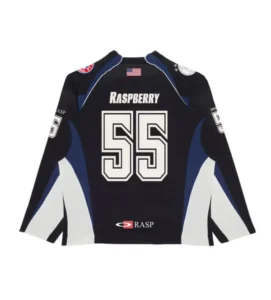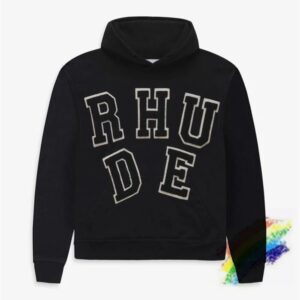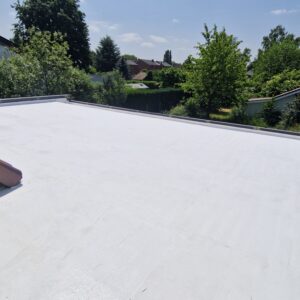Drop Dead:
Some fashion brands make you look cool. Others make you feel something.Drop Dead belongs firmly in the second category—a streetwear brand that wears its emotions on its sleeves, embraces the outcasts, and builds a world around nostalgia, music, and unfiltered creativity. Born in the early 2000s UK underground scene, Drop Dead has grown into a globally respected alternative fashion label while never compromising its artistic identity.From its unconventional beginnings to its deep-rooted community culture, Drop Dead is not just a clothing brand—it’s a creative refuge.
How It Started: The Birth of Drop Dead
The story of Drop Dead begins with Oli Sykes, lead singer of Bring Me The Horizon, who in 2005 was a rising figure in the UK metalcore scene. Inspired by his personal sketches, love for weird art, vintage cartoons, and dark humor, he began creating T-shirts from his Drop Dead Clothing selling them online. the time, the fashion landscape was dominated by polished, over-produced streetwear. Drop Dead was the opposite: rough, emotional, intentionally messy, and incredibly honest. It resonated with music fans, misfits, gamers, and subculture youth who saw themselves reflected in the designs.
A Distinctive Aesthetic: Chaos Meets Craft
What makes Drop Dead instantly recognizable is its unique, expressive visual identity. The designs rarely follow trends; instead, they combine artistic storytelling with elements of surrealism, grunge, horror, and nostalgic media.
You might see:
-
Cartoon creatures that look like they’ve crawled out of a VHS nightmare
-
Text scrawled like notes from a therapy session
-
Pastel palettes corrupted with digital glitches and ink stains
-
Oversized silhouettes that feel more like emotional armor than fashion statements
Fashion for the Forgotten Kids
Drop Dead’s greatest strength isn’t just in its visuals—it’s in who it’s for.
The brand has never tried to please everyone. Instead, it has consistently championed the outsiders, the artists, the emotionally complex, and the kids who grew up feeling like they didn’t belong in traditional fashion spaces.
For nearly two decades, Drop Dead has given voice to:
-
Young people struggling with identity and mental health
-
Fans of underground music, anime, and internet culture
-
Individuals who express themselves through art, not status symbols
-
People who find comfort in chaos, beauty in sadness, and creativity in darkness
Limited Drops, Maximum Impact
Unlike fast fashion giants who flood the market with forgettable pieces, Drop Dead operates on a limited drop model. Each release is carefully curated, emotionally driven, and often sells out within hours.
This approach achieves three things:
-
Exclusivity – Fans know they’re getting something unique, not mass-produced.
-
Sustainability – Fewer pieces, less waste, smarter production.
-
Creativity over commerce – Every drop is treated like a gallery show, not a product launch.
Collaborations That Speak to Subculture
One of Drop Dead’s mostThe brand has never tried to please everyone. Instead, it has consistently championed the outsiders, the artists, the emotionally complex, and the kids who grew up feeling like they didn’t belong in traditional fashion spaces. exciting aspects is its ability to partner with beloved cultural icons—and completely reimagine them.Rather than simply slapping a logo on a shirt, Drop Dead uses collaborations as an opportunity to reinterpret childhood favorites throughThe brand has never tried to please everyone. Instead, it has consistently championed the outsiders, the artists, the emotionally complex, and the kids who grew up feeling like they didn’t belong in traditional fashion spaces. an alternative, sometimes unsettling lens.
Notable collaborations include:
-
Sonic the Hedgehog – Playful chaos and punk energy
-
The Simpsons: Treehouse of Horror – Surrealist spins on familiar faces
-
Gremlins – Horror nostalgia meets modern streetwear
-
Rick and Morty – Twisted humor translated into graphic-heavy apparel
-
Jurassic Park – Cinematic legacy turned into dystopian fashion art
Beyond Fashion: A Platform for Expression
Drop Dead has always been more than just a clothing label—it’s a platform for self-expression.
The brand consistently supports:
-
Young and emerging artists through collaborations and spotlights
-
Fan-submitted content, including art, poetry, and photography
-
Mental health conversations, both through designs and community messaging
-
Creative storytelling, often incorporating animation, music, or interactive experiences into their drops
Sustainability Without Shouting
While many brands slap on “eco-friendly” labels for marketing, Drop Dead has taken a quietly responsible approach to its environThe brand has never tried to please everyone. Instead, it has consistently championed the outsiders, the artists, the emotionally complex, and the kids who grew up feeling like they didn’t belong in traditional fashion spaces.mental footprint.
Efforts include:
-
Organic and recycled materials in garments
-
Plastic-free packaging across all shipping
-
Cruelty-free (vegan) product lines
-
Smaller production runs to reduce waste and avoid deadstock
-
Ethical sourcing and fair-wage production facilities
Digital Innovation and Storytelling
Drop Dead understands the digital space better than most fashion brands. From the early days of MySpace and Tumblr to the current social media landscape, the brand has always embraced digital platforms as tools for narrative expansion.
Their online presence isn’t just transactional—it’s experiential.
Expect to find:
-
Narrative-based drop campaigns with layered storytelling
-
Cryptic teasers and ARG-style content to engage fans pre-release
-
Short films and motion graphics bringing characters and concepts to life
-
Behind-the-scenes interviews and fan features
Looking Ahead: The Future of Drop Dead
As Drop Dead moves into its third decade, its core mission hasn’t changed—it continues to be a safe space for self-expression, emotional honesty, and artistic rebellion.
In the near future, fans can expect:
-
More immersive drops with physical/digital crossover experiences
-
AR (augmented reality) interactions and wearables
-
Collaborations with emerging digital artists and creative collectives
-
A deeper dive into mental health storytelling in fashion
-
Potential expansion into graphic novels, games, or short films
Final Thoughts: Drop Dead Is a Feeling
Drop Dead Clothing isn’t about keeping up with the latest trends or chasing commercial approval. It’s about emotion, community, and authenticity. It’s for the ones who grew up feeling like aliens in their own skin—and found comfort in art, As Drop Dead moves into its third decade, its core mission hasn’t changed—it continues to be a safe space for self-expression, emotional honesty, and artistic rebellion., and imagination.






